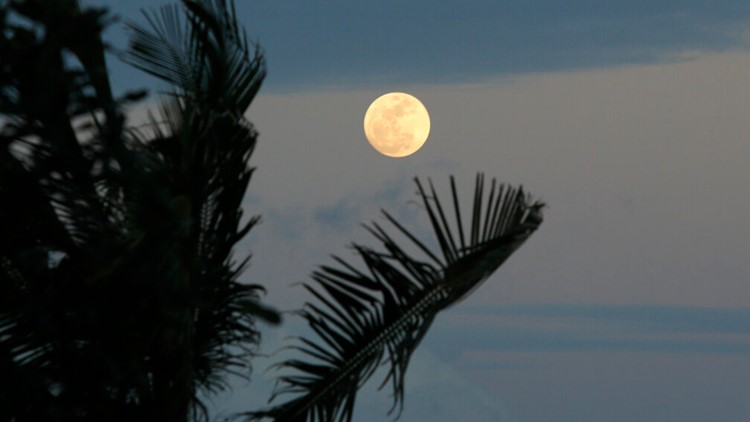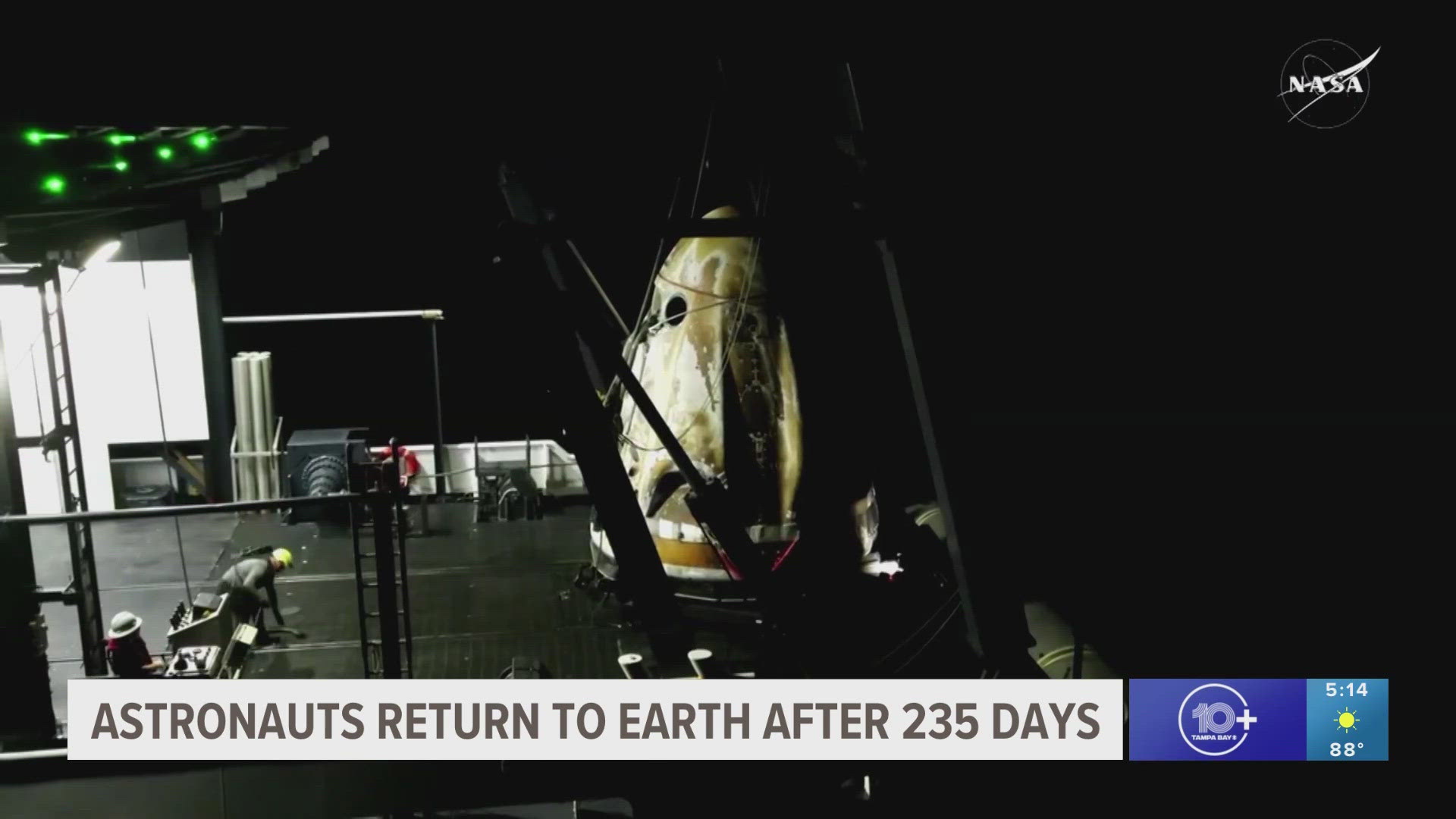ST. PETERSBURG, Fla. — August's full moon, the Sturgeon moon, will be the last full moon of the year. Here's how to watch it.
Spectators who find interest in the sky will be able to see the fourth supermoon in a row following July's Buck moon, the Strawberry moon in June and the Flower moon in May.
What is a supermoon?
It's not any ordinary full moon. It's when a full moon is within 90% of perigee, its closest approach to Earth.
The August full moon will occur at 9:36 p.m. ET on Aug. 11. This will be the best time for Floridians to watch the supermoon at its peak illumination, according to the Almanac. Just look toward the southeast after the sunset to catch a glimpse of the Sturgeon moon.
Unfortunately for the Tampa Bay area, it's a cloudy night and cloud coverage could impact your view of the supermoon.
If you live in other parts of the U.S., here's a look at the best time (about one hour after moonrise) to catch the supermoon according to local time zones. Click here for more locations.
- Phoenix, AZ: 8:37 p.m.
- Los Angeles, CA: 9:04 p.m.
- Houston, TX: 9:21 p.m.
- New York, NY: 9:19 p.m.
The next supermoon will not occur until Aug. 1, 2023, and Aug. 31, 2023, according to In-The-Sky.org.
What else is happening Thursday night?
The Perseid meteor shower peaks between Friday and Saturday this week. The best time to look out for the meteors will be after midnight Saturday when there is little light pollution, NASA says. However, the full moon could diminish the meteor shower's glow this year.



